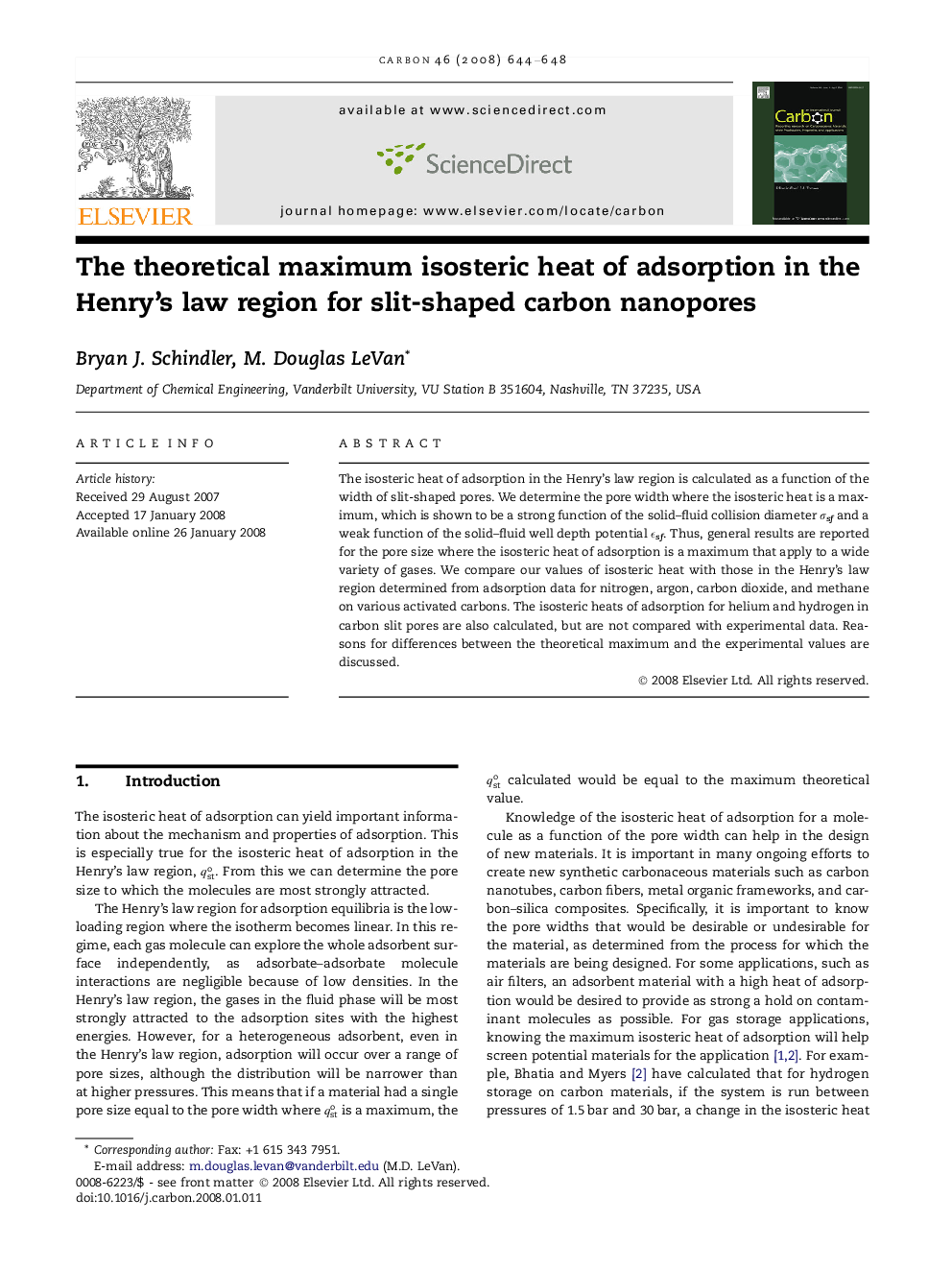| Article ID | Journal | Published Year | Pages | File Type |
|---|---|---|---|---|
| 1418736 | Carbon | 2008 | 5 Pages |
The isosteric heat of adsorption in the Henry’s law region is calculated as a function of the width of slit-shaped pores. We determine the pore width where the isosteric heat is a maximum, which is shown to be a strong function of the solid–fluid collision diameter σsf and a weak function of the solid–fluid well depth potential ϵsf. Thus, general results are reported for the pore size where the isosteric heat of adsorption is a maximum that apply to a wide variety of gases. We compare our values of isosteric heat with those in the Henry’s law region determined from adsorption data for nitrogen, argon, carbon dioxide, and methane on various activated carbons. The isosteric heats of adsorption for helium and hydrogen in carbon slit pores are also calculated, but are not compared with experimental data. Reasons for differences between the theoretical maximum and the experimental values are discussed.
